Potřebujeme váš souhlas k využití jednotlivých dat, aby se vám mimo jiné mohly ukazovat informace týkající se vašich zájmů. Souhlas udělíte kliknutím na tlačítko „OK“.
ASTM D5299-99(2012)e1
Standard Guide for Decommissioning of Groundwater Wells, Vadose Zone Monitoring Devices, Boreholes, and Other Devices for Environmental Activities (Includes all amendments And changes 2/9/2018).
Automaticky přeložený název:
Standardní Příručka pro vyřazování podzemních Wells, Vadose zóny monitorovacích zařízení, vrtů, a jiná zařízení pro aktivity v oblasti životního prostředí
NORMA vydána dne 15.2.2012
Informace o normě:
Označení normy: ASTM D5299-99(2012)e1
Poznámka: NEPLATNÁ
Datum vydání normy: 15.2.2012
Kód zboží: NS-30642
Počet stran: 16
Přibližná hmotnost: 48 g (0.11 liber)
Země: Americká technická norma
Kategorie: Technické normy ASTM
Kategorie - podobné normy:
Anotace textu normy ASTM D5299-99(2012)e1 :
Keywords:
abandonment, decommissioning, groundwater monitoring wells, hazardous waste, plugging, ICS Number Code 93.025 (External water conveyance systems)
Doplňující informace
| Significance and Use | ||||||||||||
|
5.1 Decommissioning of boreholes and monitoring wells, and other devices requires that the specific characteristics of each site be considered. The wide variety of geological, biological, and physical conditions, construction practices, and chemical composition of the surrounding soil, rock, waste, and groundwater precludes the use of a single decommissioning practice. The procedures discussed in this guide are intended to aid the geologist or engineer in selecting the tasks required to plan, choose materials for, and carry out an effective permanent decommissioning operation. Each individual situation should be evaluated separately and the appropriate technology applied to best meet site conditions. Considerations for selection of appropriate procedures are presented in this guide, but other considerations based on site specific conditions should also be taken into account. 5.2 This guide is intended to
provide technical information and is not intended to supplant
statutes or regulations. Approval of the appropriate regulatory
authorities should be an important consideration during the
decommissioning process.
|
||||||||||||
| 1. Scope | ||||||||||||
|
1.1 This guide covers procedures that are specifically related to permanent decommissioning (closure) of the following as applied to environmental activities. It is intended for use where solid or hazardous materials or wastes are found, or where conditions occur requiring the need for decommissioning. The following devices are considered in this guide: 1.1.1 A borehole used for geoenvironmental purposes (see Note 1), 1.1.2 Monitoring wells, 1.1.3 Observation wells, 1.1.4 Injection wells (see Note 2), 1.1.5 Piezometers, 1.1.6 Wells used for the extraction of contaminated groundwater, the removal of floating or submerged materials other than water such as gasoline or tetrachloroethylene, or other devices used for the extraction of soil gas, 1.1.7 A borehole used to construct a monitoring well, and 1.1.8 Any other vadose zone monitoring device. 1.2 Temporary decommissioning of the above is not covered in this guide. 1.3 Most monitoring wells and
piezometers are intended primarily for water quality sampling,
water level observation, or soil gas sampling, or combination
thereof, to determine quality. Many wells are relatively small in
diameter and are used to monitor for hazardous chemicals in
groundwater. Decommissioning of monitoring wells is necessary
to:
1.3.1 Eliminate the possibility that the well is used for purposes other than intended, 1.3.2 Prevent migration of contaminants into an aquifer or between aquifers, 1.3.3 Prevent migration of contaminants in the vadose zone, 1.3.4 Reduce the potential for vertical or horizontal migration of fluids in the well or adjacent to the well, and 1.3.5 Remove the well from active use when the well is no longer capable of rehabilitation, or has failed structurally; no longer required for monitoring; no longer capable of providing representative samples or is providing unreliable samples; or required to be decommissioned; or to meet regulatory requirements. 1.4 This guide is intended to
provide information for effective permanent closure of wells so
that the physical structure of the well does not provide a means of
hydraulic communication between aquifers or react chemically in a
detrimental way with the environment.
1.5 The intent of this guide is to provide procedures that when followed result in a reasonable level of confidence in the integrity of the decommissioning activity. However, it may not be possible to verify the integrity of the decommissioning procedure. At this time, methods are not available to substantially determine the integrity of the decommissioning activity. 1.6 The values stated in inch-pound units are to be regarded as the standard. The SI units given in parentheses are for information only. 1.7 This standard does not purport to address all of the safety problems, if any, associated with its use. It is the responsibility of the user of this standard to establish appropriate safety and health practices and determine the applicability of regulatory limitations prior to use. 1.8 This guide offers an organized collection of information or a series of options and does not recommend a specific course of action. This document cannot replace education or experience and should be used in conjunction with professional judgment. Not all aspects of this guide may be applicable in all circumstances. This ASTM standard is not intended to represent or replace the standard of care by which the adequacy of a given professional service must be judged, nor should this document be applied without consideration of a project's many unique aspects. The word“ Standard” in the title of this document means only that the document has been approved through the ASTM consensus process.
|
|
Standard Guide for Site Characterization for Engineering Design and Construction Purposes
|
|
Standard Practice for Design and Installation of Ground Water Monitoring Wells in Aquifers
|
|
Standard Practice for Decontamination of Field Equipment Used at Waste Sites
|
|
Standard Specification for Portland Cement
|
|
Standard Test Method for Determining Density of Construction Slurries
|
|
Standard Terminology Relating to Soil, Rock, and Contained Fluids |
Podobné normy:
1.6.2010
NEPLATNÁ
1.6.2012
NEPLATNÁ
1.2.1999
NEPLATNÁ
1.9.2012
NEPLATNÁ
1.9.2012
1.8.2011
Doporučujeme:
EviZak - všechny zákony včetně jejich evidence na jednom místě
Poskytování aktuálních informací o legislativních předpisech vyhlášených ve Sbírce zákonů od roku 1945.
Aktualizace 2x v měsíci !
Chcete vědět více informací? Podívejte se na tuto stránku.


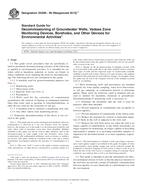
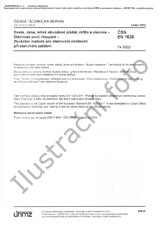 ČSN EN ISO 22391-5..
ČSN EN ISO 22391-5..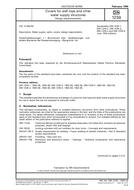 DIN 1239:1999-02..
DIN 1239:1999-02..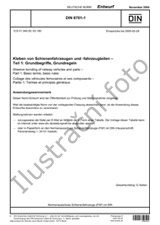 DIN 18302:2012-09..
DIN 18302:2012-09..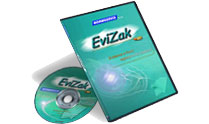
 Cookies
Cookies
